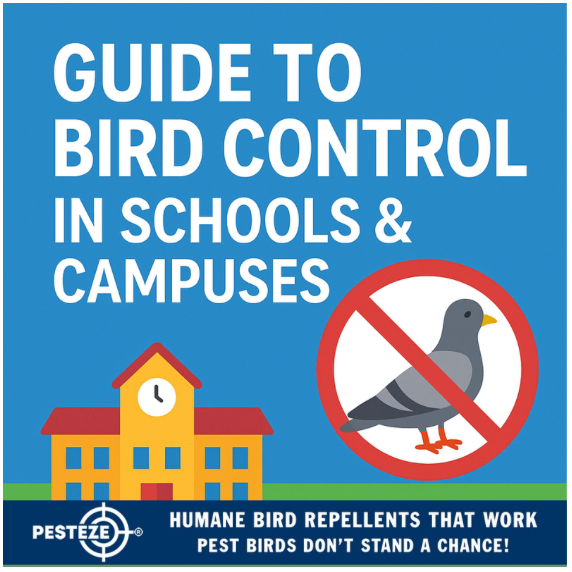GUIDE TO BIRD CONTROL IN SCHOOLS & CAMPUSES: CREATE A CLEAN, SAFE, AND LEARNING-FRIENDLY ENVIRONMENT

GUIDE TO BIRD CONTROL IN SCHOOLS & CAMPUSES: CREATE A CLEAN, SAFE, AND LEARNING-FRIENDLY ENVIRONMENT
SUMMARY
Bird infestations on school grounds can disrupt learning, cause property damage, and pose health risks to students and staff. This guide provides school administrators, facility managers, and maintenance teams with a step-by-step plan to prevent and control pest bird problems—using humane, eco-friendly, and cost-effective solutions that maintain a positive campus atmosphere.
FEATURES
• Campus-Wide Strategies: Covers outdoor areas, buildings, and high-traffic student zones.
• Humane Deterrents: Keeps birds away without causing harm or distress.
• Low-Maintenance Solutions: Options designed for long-term effectiveness with minimal upkeep.
• Health & Safety Focus: Reduces droppings, allergens, and pest-related risks for students.
• Scalable Plans: Works for small schools, large universities, and multi-building campuses.
• Seasonal Adaptations: Adjusts to different migration patterns and weather changes.
GUIDE DESCRIPTION
On school and university campuses, bird activity can quickly turn from charming to problematic. Nesting in eaves, droppings on benches, and noisy flocks around lunch areas can affect daily operations and student comfort. Worse yet, droppings can carry bacteria and create slip hazards, while nests can block ventilation systems or damage building exteriors.
A comprehensive bird control strategy begins with identifying high-risk zones. Cafeterias, sports fields, courtyards, and roof edges often attract birds due to food waste, shelter, and water sources. Encourage proper waste disposal by installing bird-proof trash bins and increasing cleaning frequency in outdoor dining areas.
Architectural deterrents can be effective without harming the school’s welcoming atmosphere. Install bird spikes, netting, or slope guards on ledges and rooflines. In areas with heavy foot traffic, opt for visual deterrents like reflective tape or predator decoys to move birds away from student spaces.
Maintenance teams should also inspect vents, chimneys, and overhangs, sealing entry points with mesh or covers to prevent nesting inside buildings. Keeping gutters clean and eliminating standing water will make the campus less appealing to birds.
Finally, make bird control part of the school’s regular maintenance cycle. Seasonal inspections allow teams to adjust deterrents during migration periods and before nesting seasons begin. With consistent application, schools can remain clean, safe, and bird-free—creating a better environment for learning, sports, and campus life.
- Pukhraj Sharma


Comments 0